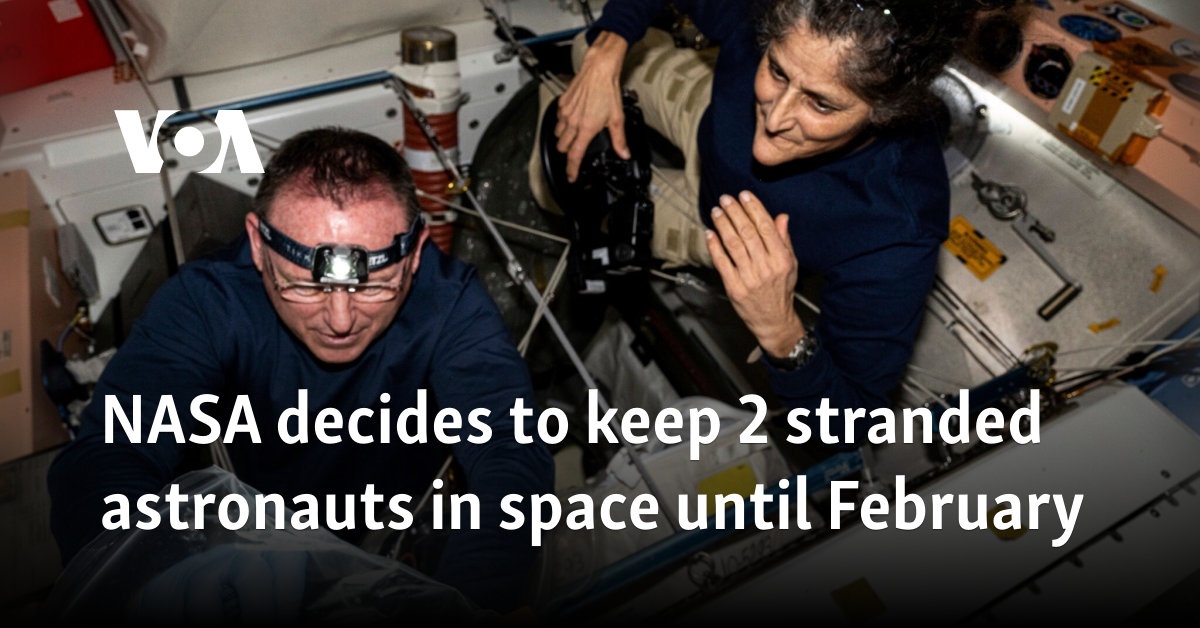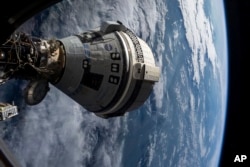NASA decided Saturday that it was too risky to return two astronauts to Earth in Boeing’s new, troubled capsule. They will have to wait until next year for a flight home with SpaceX. What was supposed to be a week-long test flight for the pair will now take more than eight months.
The veteran pilots have been stuck on the International Space Station since early June. A series of annoying engine failures and helium leaks in the new capsule marred their trip to the space station, and they ended up in a holding pattern while engineers ran tests and debated what to do for the return trip.
After nearly three months, the decision finally came from NASA’s highest ranks on Saturday. Butch Wilmore and Suni Williams will return in a SpaceX spacecraft in February. Their empty Starliner capsule will undock in a week or two and attempt to return on autopilot.
As test pilots of the Starliner, the two were supposed to oversee this critical final leg of the journey with the landing in the US desert.
It was a major blow to Boeing, adding to the company’s aircraft safety concerns. Boeing had been banking on Starliner’s first crewed flight to revive the troubled program after years of delays and spiraling costs. The company had insisted that Starliner was safe based on all of its recent engine tests in space and on the ground.
The astronauts
Retired Navy captains with many years of space flight experience, Wilmore, 61, and Williams, 58, expected surprises, although not to this extent, when they took part in the sea trials of a new spacecraft.
Before their June 5 launch from Cape Canaveral in Florida, they said their families had experienced the uncertainty and stress of their careers decades ago. During their only orbital press conference last month, they said they had confidence in the engine tests being conducted. They had no complaints, they added, and they enjoyed helping with work on the space station.
Wilmore’s wife, Deanna, was equally stoic in an interview with WVLT-TV in Knoxville, Tennessee, her home state, earlier this month. She was already preparing for a delay until next February: “You just have to kind of accept it.”
There were few options.
The SpaceX capsule currently parked at the space station is reserved for the four residents who have been there since March. They will return in late September, their stay extended by a month by the Starliner dilemma. NASA said it would be too dangerous to squeeze two more into the capsule except in an emergency.
The docked Russian Soyuz capsule is even more cramped, as it can only carry three passengers – two of them Russians who are currently completing their one-year mission.
Wilmore and Williams will have to wait for SpaceX’s next taxi flight, which is scheduled to launch at the end of September with two astronauts instead of the usual four for a six-month stay. NASA has taken two of them away to make room for Wilmore and Williams on the return flight at the end of February.
NASA said it was not seriously considering asking SpaceX to perform a quick, independent rescue. Last year, the Russian space agency had to rush a replacement Soyuz capsule for three men whose original spacecraft was damaged by space debris. The switch extended their mission by more than a year – a U.S. space record still held by Frank Rubio.
History of the problems
The Starliner’s problems began long before its last flight.
The first uncrewed test flight in 2019 was botched by faulty software, requiring a repeat in 2022. Then problems arose with the parachute and other issues, including a helium leak in the capsule’s fuel system, which prevented a launch attempt in May. The leak was considered isolated and small enough not to be a cause for concern. But more leaks appeared after launch, and five engines also failed.
All but one of these small engines were able to restart in flight. However, engineers remain baffled as to why some engine seals appear to swell, blocking the fuel lines and then returning to their normal size.
These 28 engines are vital. Not only are they needed for the rendezvous with the space station, but they also ensure that the capsule is pointing in the right direction at the end of the flight, while larger engines steer the spacecraft out of orbit. Misalignment could result in disaster.
The Columbia disaster is still fresh in many minds – the shuttle broke apart during re-entry in 2003, killing all seven people on board – and NASA has launched an open debate about the Starliner’s ability to return. Dissenting opinions were suppressed during the doomed Columbia flight, just as they were during the Challenger flight in 1986.
Despite Saturday’s decision, NASA is not giving up on Boeing.
A decade ago, NASA launched its commercial crew program with the goal of contracting two competing U.S. companies to transport astronauts in the post-shuttle era. Boeing won the larger contract: over $4 billion, while SpaceX won $2.6 billion.
SpaceX has already completed supply flights to the station and successfully completed its first of now nine astronaut flights in 2020, while Boeing has been mired in design flaws that have cost the company more than a billion dollars. NASA officials still hope the Starliner’s problems can be fixed in time for another crewed flight in about a year.


